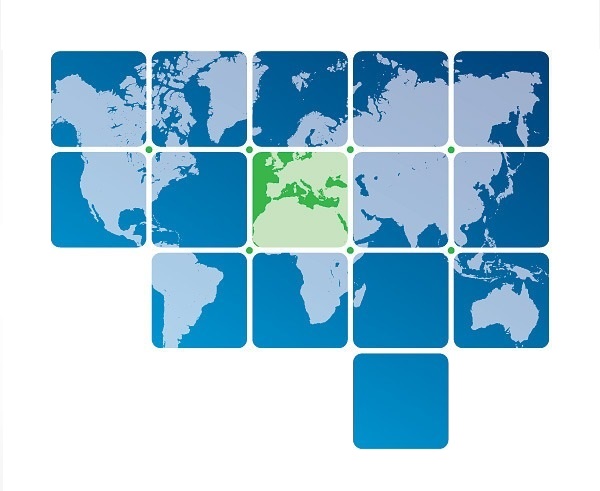There are around 50 EMBA programmes in Mainland China, graduating about 7000 alumni every year.90% of these EMBA students are enrolling in Chinese EMBA programmes (including classes taught in English than translated in Chinese, simultaneous or sequential) and only 10% are in English.Therefore, English-language EMBA programmes are playing in a niche market in Mainland China.
Whichmba.net got a lot phone calls from executives to consult on which EMBA programme should be applying. To tackle this question, we should start from a big picture.
The major providers of English-language EMBA programmes in China (including Mainland and Hong Kong) can be divided into two groups:
1. To target expatriate segment.

HKUST-Kellogg EMBA, Tsinghua-INSEAD Dual Degree EMBA, USC Marshall-Shanghai Jiaotong GEMBA, Richard Ivey School of Business Hong Kong EMBA are recruiting executives in multinational headquarters and expatriates in Asia market. They provide students cross border experience and encourage mutual understanding beyond cultures. Since 2008, Hong Kong University-Columbia-LBS EMBA-Global is also entering into this sector to compete while CEIBS-IESE Global EMBA enters in 2015.
2. To target Chinese managers with international responsibility.

One example is the Washington University in St. Louis, Olin Business
School, which has run a joint venture EMBA programme with Fudan University
since 2002. Wash U-Fudan EMBA supplied about 50 students per year who
are able to run Chinese company in a global context and to run a multinational
firm in China market. It was ranked No.7 worldwide by Financial
Times EMBA ranking.CEIBS
Global EMBA could be grouped into this sector. CEIBS Global EMBA has trained hundreds of E-level executives for China in the past 20 years. However,
students who consider applying for CEIBS are willing to enroll in its
Chinese language EMBA Class for better networking in Chinese local society.
Here to summarize some market trends of
English-language EMBA programmes in 2015.
Globalization
1.To fly professors, to fly students and to fly classroom

2. Global campus

Quite a few leading business school set up satellite campuses in other continents. France based INSEAD established Singapore campus to catch up opportunities in Asia developing economies. Students also got chance to move from one campus to another. Canada based Richard Ivey is also setting up Asia campus in Hong Kong to deliver its Asia EMBA Manchester Business School in UK has set up 6 centres outside UK to deliver its Global MBA and EMBA classes.
3. Joint programmes

HKUST works with Kellogg to launch its KH EMBA. INSEAD together with Tsinghua launch dual degree EMBA to meet the needs from global market. With 50/50 resource input from Tsinghua and from INSEAD, the dual degree EMBA deepens expatriates’ exposure in China with more Chinese case discussion and business culture orientation.
4. Localization of Curriculum

To tackle the challenge from Chinese managers and executives who are pursuing not only global knowledge but also local expertise, some EMBA programmes launched at least 2-3 extra curriculum which are about Chinese history, culture and economy.Washington-Fudan EMBA programmeis inviting faculty from Fudan University to deliver those extra electives.
Shanghai starts to be a major playground

The market is quite competitive in major cities such as Shanghai.
The market size of English-language EMBA in China is growing remarkably slow from 2002 to 2015. Since 2010, this market started to compete in an even more competitive market with more and better part-time English speaking MBA programmes launched in the market.
"The number of students enrolled in English-language based EMBA programs aimed at meeting China's talent shortage is growing remarkably slowly."Said by Mr. John Van Fleet, Executive Director ofUSC Marshall School of Business-SJTU Global EMBA.
"Our estimate is that since the China Ministry of Education began authorizing Sino-Foreign joint EMBA ventures in 2002, total enrolments have been growing by 6% to 7% per year, approximately 1/3 as fast as total employment in foreign invested companies has grown over the same period. Total enrolments in five leading English-language EMBA programs in Shanghai that we track has reached only 230 per year, which is less than the annual enrolment at any one of several Chinese-language based programs in Shanghai."
English-Language EMBA Program Price List 2015 Spring Admission
(1USD=6.1RMB )
Tuition fee Programme Name
964000 Kellogg-HKUST EMBA
930000 Guanghua-Kellogg EMBA
924000 EMBA-Global Asia Programme (HKU)
624000 Richard Ivey School of Business Hong
Kong EMBA
620000 Tsinghua - Insead Dual Degree EMBA
620000 USC-Shanghai Jiao Tong GEMBA
600000 Washington University-Fudan
University EMBA
588000 CEIBS Global EMBA
580000 HEC EMBA China
473800 The Global EMBA of Manchester Business School
455000 University of Maryland, Robert H. Smith School of Business EMBA
420000 Tongji-Mannheim EMBA Dual Degree
391000 ESCP-Tongji EMBA
380000 Sun
Yat Sen University Lingnan College - Minnisoda University Karlson CHEMBA
Shanghai Area
USC-Shanghai Jiao Tong GEMBA
Washington University-Fudan
University EMBA
CEIBS
EMBA(International track)
Tongji-Mannheim
EMBA Dual Degree
Hong Kong, Shenzhen and Guangzhou Area
Kellogg-HKUST EMBA
Richard Ivey School of Business Hong
Kong EMBA
Sun
Yat Sen University Lingnan College - Minnisoda University Karlson CHEMBA
The Chinese University of Hong Kong EMBA
Chicago Booth School of Business EMBA(Asia)
Beijing Area
Tsinghua - Insead Dual Degree EMBA
University of Maryland, Robert H.
Smith School of Business EMBA
Introduction of WhichMBA.net
WhichMBA.net is a cross media platform publishing business school guide books and magazines to give advice for potential candidates. Affiliated professional website www.whichmba.net is providing online search and comparison of programme information. Students, who want to catch up market trend and to choose a right programme from overseas providers or local players, use our online service.






